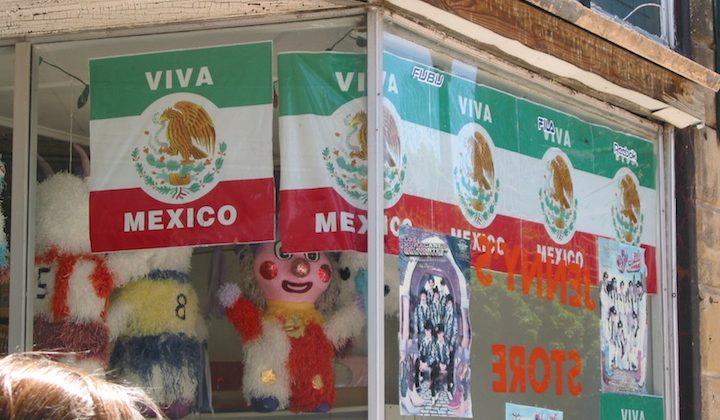As noted in the previous post, I was able to attend the Erasing Boundaries Project symposium in April 2011 in New York City. The project is a collaboration among landscape architecture, architecture, and planning faculties, students and community partners. The two days in New York were packed with stimulating presentations and lectures. Kudos to the organizers: Peter Aeschbacher and Mallika Bose at Penn State, Cheryl Doble at SUNY-Environmental Science and Forestry, Sigmund Shipp at Hunter College, and Paula Horrigan from Cornell. This was a huge undertaking and they filled it with two keynotes and twelve sessions over two days. Just to give a taste and overview of some presentations:
- Deborah Georg from Ohio State presented “A Proposal for Assessment of Community Impacts from Studio-Based Service-Learning Work.” She provided a visualization of the problematic timelines of academic calendars and community needs. Just seeing the disconnected schedules among faculty, student and community efforts underscored the importance of evaluating whether service-learning actually does any good. What she described as “Community-Centered Investment Assessment Scoring” (CCIAS) ranks and evaluates how communities fare over time, quantitatively. I hope she publishes this work.
- Kofi Boone, who wasn’t able to attend, provided a video of his work at North Carolina State on “Cellphone Diaries.” AT&T donated phones and students were “tech buddies” on walks with elders in historically-layered Chavis Park in Raleigh. Fifty-eight digital videos were made, with the observation that being in the place itself encouraged longer narratives and richer memories.
- David Scobey, now executive dean of The New School, gave a keynote, “The Place of Engaged Learning in a Glocal and Virtual University.” He made the point that collaboration is intellectually generative and crucial, but not enough. He told the story of Broadway Park in Ann Arbor and the effort to get the University of Michigan to be an institutional citizen, a steward of the place in which the university resides, but also how the local is at the same time global, with new immigrants and digital interactions. Another example that resonated with a recent conversation that I had with the Krannert Center’s Engagement Director, Sam Smith, about his work in Mali, New York City, and Urbana, was Scobey’s involvement with the Center for Community Partnership at Bates College. There he worked with Somali immigrants who have moved into the area on a project called Rivers of Immigration, with digital storytelling as a component. Bates College students then started going to Somali refugee camps to amplify the stories from Maine. These are networks of close and faraway that collapse into each other. Scobey’s work reminded me of Faranak Miraftab’s multi-dimensional work in Beardstown, IL, with Mexican, West African and white folks, and their complicated connections to the Cargill plant and the prison in the area.

